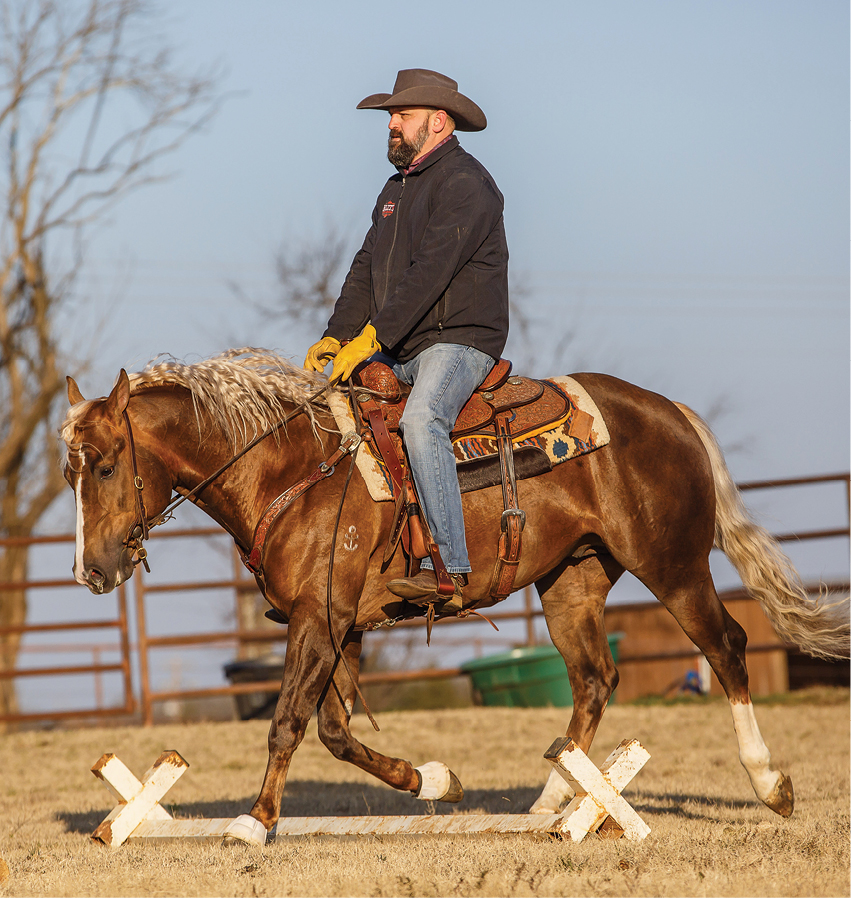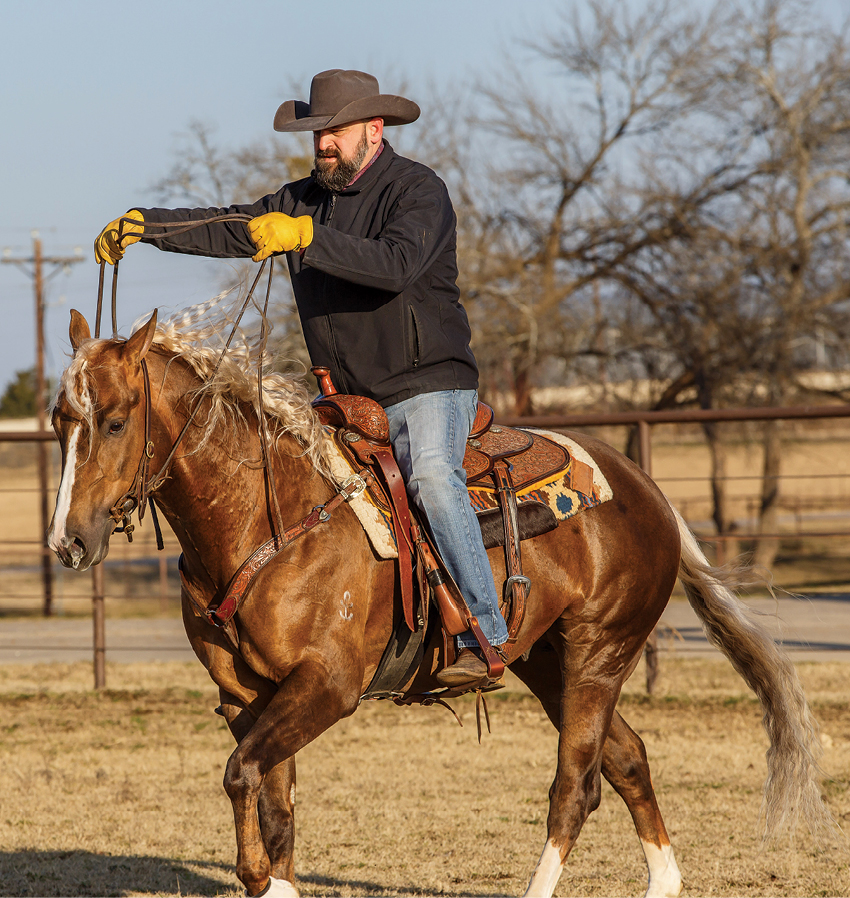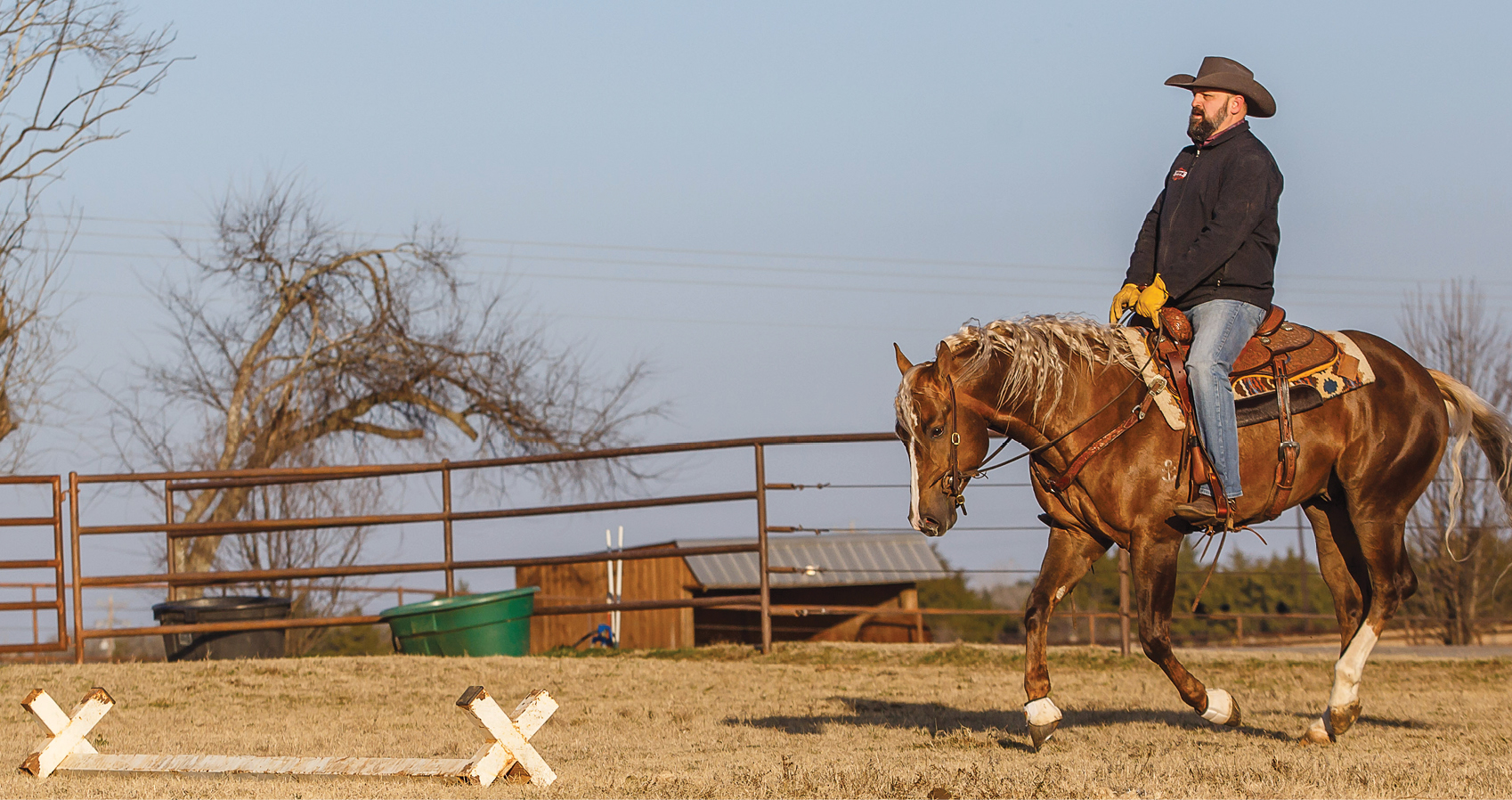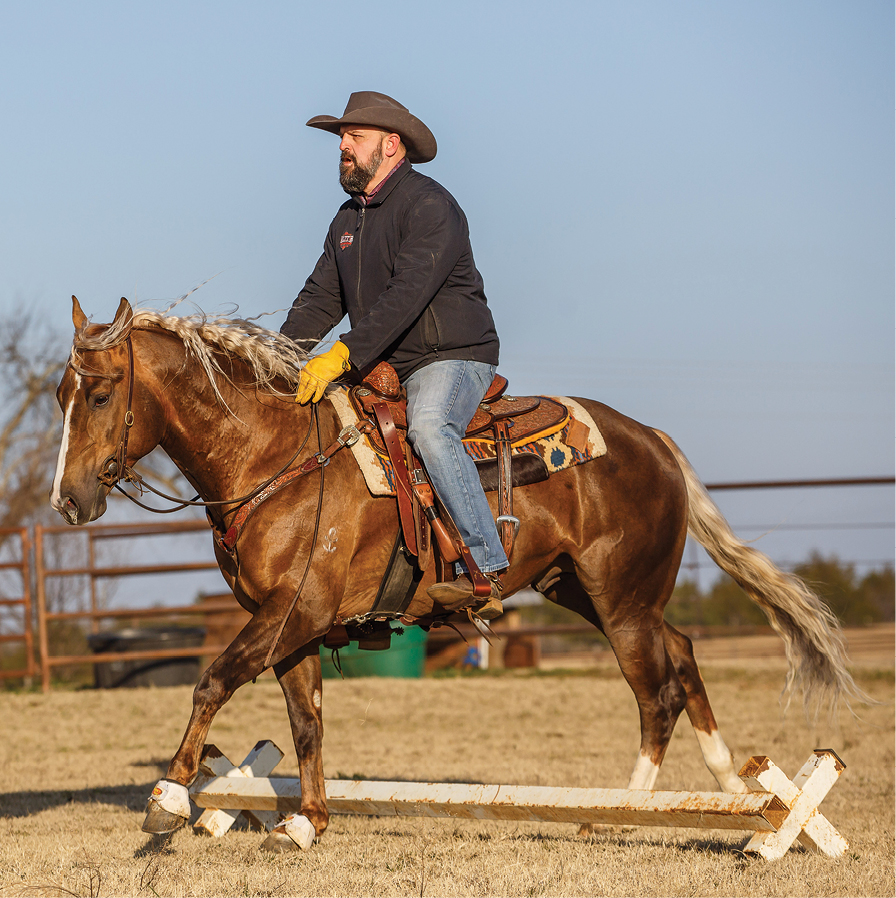The lopeover, a standard component of ranch riding and ranchmanship classes, is typically less complex than traditional trail-class lopeovers. Still, it’s a challenge that puts many riders in the penalty box.
The key to mastering the ranch riding lopeover is a cadenced stride on the approach to the pole. With a multi-pole lopeover, you might struggle with trying to correct your horse rather than letting him find his own stride. Your horse must be able to collect and round up, allowing you to pick the ideal path for a straight line that sets him up for success for the maneuver that comes next.
[READ ABOUT: Ranch Riding Transitions]
An uncoordinated hop, gait break, or tick of the pole looks disjointed and costs points on your scorecard. I’m going to share the secrets to acing the ranch riding lopeover so you look polished every time. I’ll describe common mistakes and give you pointers to correct them.
Who Benefits?
The work I’ll show you isn’t useful only for ranch riding events. Riders competing in trail classes, reining, hunter under saddle, or over fences will benefit from developing an accurate feel of their horses’ stride length. And, in any class that includes a single- or multiple-pole setup, knowing your horse’s stride is essential to determining how best to navigate the pattern. Moreover, even if you’re not competing, learning to understand how your horse lengthens and shortens his stride will improve your communication with him and enable him to be more responsive to your cues—great benefits even if all your riding is done out on the trails.
Know the Standards
Many ranch riding patterns call for loping over more than one pole in a row. The American Ranch Horse Association rulebook includes six different patterns, two of which include loping over poles. In each case, the horse and rider are required to lope across three poles in a row. The American Quarter Horse Association and American Paint Horse Association ranch-riding patterns may also include multi-pole lopeovers.
At ARHA shows, the standard distance between lopeover poles is 6 to 7 feet. I start a green, less collected horse on poles set 6 1/2 to 7 feet apart. For horses I can keep collected, I move the poles closer together—5 1/2 to 6 feet apart.
[READ ABOUT: Ranch Riding Pattern Evaluation]
Start With One Pole
The best method for mastering a sequence of poles is to start with a single pole in the middle of the arena. One pole centrally located is easy to approach from either direction and, if you can get your stride correct to that first pole, the additional poles you add later will come naturally.
To begin, warm your horse up as usual, crossing over the pole a few times at a walk, then a trot. Then turn down the center of the arena, and approach the pole at a lope. As you do, resist the temptation to pick up your hands and micromanage your horse—a common mistake. If you micromanage, you’ll get in your horse’s way rather than letting him set up on his own. Picking up on his mouth interferes with his natural cadence, increasing the likelihood he’ll tick a pole or—later on—break stride in the middle of several poles.
It can be difficult to break a bad habit, so if you’re used to picking up on your horse as you approach a pole, grab your horse’s mane with your rein hand to keep yourself from getting into your horse’s mouth. (As you improve, you’ll be able to leave his mouth free without holding on to his mane.)
Find Focus, Sit Deep
Another common rider error is staring down at the ground, anticipating the upcoming pole or poles. Looking down influences your body position, and even the slightest shift in your posture and position can affect your horse’s stride.
So, just as when you ride in a rail or pattern class without poles, look up and well ahead as you ride toward the pole. Pick a point 20 or 30 feet beyond the pole to focus on. It could be a fence post, a sign, or a tree on the other side of the fence. Doing this consciously will begin to teach you not to look down in the approach.
As you’re looking ahead and approaching the pole, sit deep in the saddle. Avoid the temptation to stand up in a slight two-point position as your horse crosses the pole. In jumping classes, this is appropriate as it frees up your horse’s back to lift off the ground and clear a fence. In ranch classes, though, it’s the exact opposite. The two-point position blocks your horse’s shoulders, making it more difficult for him to cross the pole with a balanced stride.
Try This
I’ve had riders struggle with this concept of sitting deep in the saddle. As a teaching aid, I tell them to concentrate on squeezing their butt cheeks together as they approach and cross the pole. That makes getting up into a two-point position nearly impossible. That way, they avoid this error until they learn to remain sitting back and deep on their own.
Practice riding across the single pole in both directions, concentrating on my key points: Letting your horse find his striding, focusing on a point well beyond the pole, and keeping your weight deep in the saddle. Continue until crossing the pole becomes rhythmic and predictable for you, and your horse isn’t hopping, breaking stride, or ticking the pole.
When you’ve achieved all that, you’re ready to advance.




Add Poles, Same Approach
When the time is right, add two more poles for a total of three. Begin by walking and trotting over the three-pole set. (Note: Set the distance between poles at 15 to 24 inches for the walk and 2 1/2 to 3 1/2 feet for the trot, adjusting as need be for your horse’s stride length and level of collection.)
When you’ve familiarized your horse with the three poles at the walk and trot, and he’s negotiating them in a calm, collected manner, reset the pole distances as I described earlier (remembering that 6 to 7 feet apart is standard for ARHA shows). Now resume work at a lope.
Approach the first pole of the three-pole set the same way you approached the single pole. If you do it correctly, letting your horse find his stride, he’ll continue right over all three poles.
One caveat: Practicing the lopeover is like any other drill. It’s important to school the maneuver regularly so your horse learns what’s expected of him, but you want to avoid over-schooling, which teaches him to anticipate or even resent the obstacle.
With that caveat in mind, practice enough at home to make navigating the poles second nature, as this prepares your horse to do the same in the show pen.
[READ ABOUT: Introducing a Green Ranch Riding Horse to Cattle]
Get Truly Show-Ready
Once you get to the show, there will be a lot of distractions that can impact your horse’s performance. The activity of exhibitors and horses passing by the arena, unexpected sights or noises, and your own nerves can interfere with your and your horse’s focus. To prepare for the unexpected, add an additional degree of difficulty at home so that when you get to the show pen, the plain lopeover is relatively easy by comparison.
For example, you can add a degree of difficulty to your lopeover practice by elevating the poles 4 to 6 inches using basic plastic jump standards set on their sides. Lifting the poles off the ground a few inches teaches your horse to pick up his feet to avoid ticking.
Practicing a higher height at home will make loping over ground-level poles in the show pen seem easy. The goal is to avoid ticking any of these raised poles while riding over in a cadenced stride.
Ultimately, the more prepared your horse is at home, the better he’ll perform at the show. At the end of the day, that will keep you out of the penalty box and maybe even add a few points to your score.
[READ ABOUT: Ranch Riding Spin]




